Submitted:
13 October 2023
Posted:
13 October 2023
You are already at the latest version
Abstract
Keywords:
1. Introduction
2. Electrical parameters of absorption materials
3. Measurements of complex permittivity
- −
- transmission-reflection method based on coaxial line,
- −
- method using an open coaxial line (reflection method),
- −
4. Assumptions of the research methods
4.1. Reflection method
4.2. Free space method
5. Measuring system
5.1. Reflection method
5.1.1. Measuring probe
5.1.2. Calibration Kit and ZVA Calibration
5.1.3. Measurement procedure
- −
- Selection of the measurement frequency range
- −
- Performing calibration for the vector network analyzer. The measurement system is a single-port network, so the measurement is limited only to measuring the input reflectance S11. The VNA calibration method is OSL (Open, Short and Load) calibration, which is performed at the interface between the probe and the tested sample.
- −
- S11 measurement for 3 materials with known complex permittivity’s and determination of correction factors A, B and C on this basis using the (16).
- −
- Measurement of S11 for any desired sample and determination of the admittance based on equation (16). Breaking equation (16) into a real and imaginary part, thus obtaining a system of two real nonlinear equations for two unknowns, the real part and the imaginary of the complex permittivity .
- −
- If necessary, derivation from of any quantities of interest, such as relative permittivity εr, loss factor tan(δ) or conductivity σ from equations (3), (4), (5).
5.2. Free space method
5.2.1. Measuring antennas
5.2.2. ZVA calibration
5.2.3. Measurement procedure
- −
- Selection of the measurement frequency range.
- −
- Performing calibration for the vector network analyzer. The measurement system has two ports, so the calibration measurement consists of measuring the input reflection coefficients S11 and S22 and measuring the transmission coefficients S21 and S12. The VNA calibration method is OSLT (Open, Short, Load and Thru) calibration, which we perform on the interfaces to which we connect the measurement antennas.
- −
- Connecting two identical measurement antennas matched to the frequency range set on the vector analyzer. Performing input measurements of the S11 and S22 reflection coefficients and transmission measurements of the S21 and S12 coefficients with connected measurement antennas (without the tested material) and determining, on this basis, correction factors related to the XS11, XS22, XS21, XS12 antennas used.
- −
- Locating the tested material between measurement antennas and measuring the input reflection coefficients S11 and S22 as well as the transmission measurements coefficients S21 and S12 with measurement antennas connected to the tested material.
- −
- Calculation of the values of the measured reflection coefficients S11 and S22 and transmission coefficients S21 and S12, taking into account correction factors related to the antennas used.
- −
- Determination of the total complex permittivity based on the parameters of the scattering matrix, taking into account correction factors related to the antennas used.
- −
- Determination of the total complex permeability based on the parameters of the scattering matrix, taking into account correction factors related to the antennas used.
- −
- If necessary, derivation of any quantities of interest from , such as relative permittivity εr, loss factor tan(δ) or conductivity σ from equations (3), (4), (5) .
6. Characteristics of the tested material
7. Measurement results and discussion
8. Conclusions
References
- Shimada, K.; Ishizuka, K.; Tokuda, M. A Study of RF Absorber for Anechoic Chambers Used in the Frequency Range for Power Line Communication System. PIERS Online 2006, 2, 538–543. [Google Scholar] [CrossRef]
- Araz, I. The measurement of shielding effectiveness for small-in-size ferrite-based flat materials. Turk. J. Electr. Eng. Comput. Sci. 2018, 26, 2997–3007. [Google Scholar] [CrossRef]
- Zahari, M.H.; Guan, B.H.; Cheng, E.M.; Mansor, M.F.C.; Lee, K.C. Emi shielding effectiveness of composites based on barium ferrite, pani, and mwcnt. Prog. Electromagn. Res. M 2016, 52, 79–87. [Google Scholar] [CrossRef]
- IEC 61000-4-3:2020; Part 4-3: Testing and Measurement Techniques—Radiated, Radio-Frequency, Electromagnetic Field Immunity Test. Electromagnetic Compatibility (EMC): Geneva, Switzerland, 2020.
- Council Recommendation 1999/519/EC of 12 July 1999, on the limitation of exposure of the general public to electromagnetic fields (0 Hz to 300 GHz). Off. J. Eur. Communities 1999, L199, 0059–0070.
- ICNIRP Guidelines for limiting exposure to electromagnetic fields (100 kHz to 300 GHz). Health Phys. 2020, 118, 483–524. [CrossRef] [PubMed]
- IEEE Std C 95. 1; IEEE Standard for Safety Levels with Respect to Human Exposure to Electric, Magnetic, and Electromagnetic Fields, 0 Hz to 300 GHz. IEEE: New York, NY, USA, 2019. [Google Scholar]
- ZAJICEK, Radim; OPPL, Ladislav a VRBA, Jan. Broadband Measurement of Complex Permittivity Using Reflection Method and Coaxial Probes. Online. Radioengineering. 2008, roč. 17, č. 1, s. 14-19. ISSN 1210-2512.
- Abbas, S.; Dixit, A.; Chatterjee, R.; Goel, T. Complex permittivity, complex permeability and microwave absorption properties of ferrite–polymer composites. J. Magn. Magn. Mater. 2007, 309, 20–24. [Google Scholar] [CrossRef]
- Sheen, N.; Woodhead, I. An Open-ended Coaxial Probe for Broad-band Permittivity Measurement of Agricultural Products. J. Agric. Eng. Res. 1999, 74, 193–202. [Google Scholar] [CrossRef]
- Seewattanapon, S.; Akkaraekthalin, P. A Broadband Complex Permittivity Probe Using Stepped Coaxial Line. J. Electromagn. Anal. Appl. 2011, 03, 312–318. [Google Scholar] [CrossRef]
- Baker-Jarvis, J.; Janezic; Domich, P. ; Geyer, R. Analysis of an open-ended coaxial probe with lift-off for nondestructive testing. IEEE Trans. Instrum. Meas. 1994, 43, 711–718. [Google Scholar] [CrossRef]
- Vergnano, A.; Godio, A.; Raffa, C.M.; Chiampo, F.; Vasquez, J.A.T.; Vipiana, F. Open-Ended Coaxial Probe Measurements of Complex Dielectric Permittivity in Diesel-Contaminated Soil during Bioremediation. Sensors 2020, 20, 6677. [Google Scholar] [CrossRef] [PubMed]
- Baker-Jarvis, J.; Janezic, M.D; Riddle, B.F; Johnj, R.T; Kabos, P.; Holloway, C.; Grosvenor, C.A. : Measuring the permittivity and permeability of lossy materials: solids, liquids, metals, building materials and negative-index materials, Natl. Inst. Stand. Technol., Technical Note, NIST, (2005).
- Ellison, W.J.; Moreau, J.-M. Open-Ended Coaxial Probe: Model Limitations. IEEE Trans. Instrum. Meas. 2008, 57, 1984–1991. [Google Scholar] [CrossRef]
- Komarov, S.A.; Komarov, A.S.; Barber, D.G.; Lemes, M.J.L.; Rysgaard, S. Open-Ended Coaxial Probe Technique for Dielectric Spectroscopy of Artificially Grown Sea Ice. IEEE Trans. Geosci. Remote. Sens. 2016, 54, 4941–4951. [Google Scholar] [CrossRef]
- Kintner, C. E. (2017). Free-Space Measurements of Dielectrics and Three-Dimensional Periodic Metamaterials. Graduate Theses and Dissertations Retrieved from https://scholarworks.uark. 2557. [Google Scholar]
- Sahin, S.; Nahar, N.K.; Sertel, K. A Simplified Nicolson–Ross–Weir Method for Material Characterization Using Single-Port Measurements. IEEE Trans. Terahertz Sci. Technol. 2020, 10, 404–410. [Google Scholar] [CrossRef]
- Vicente, A.N.; Dip, G.M.; Junqueira, C. The step by step development of NRW method. [CrossRef]
- Kim, S.; Baker-Jarvis, J. An Approximate Approach to Determining the Permittivity and Permeability Near Lambda/2 Resonances in Transmission/Reflection Measurements. Prog. Electromagn. Res. B 2014, 58, 95–109. [Google Scholar] [CrossRef]
- Park, M.-S.; Cho, J.; Lee, S.; Kwon, Y.; Jung, K.-Y. New Measurement Technique for Complex Permittivity in Millimeter-Wave Band Using Simple Rectangular Waveguide Adapters. J. Electromagn. Eng. Sci. 2022, 22, 616–621. [Google Scholar] [CrossRef]
- de Paula, A.L.; Rezende, M.C.; Barroso, J.J. Modified Nicolson-Ross-Weir (NRW) method to retrieve the constitutive parameters of low-loss materials. "Modified Nicolson-Ross-Weir (NRW) method to retrieve the constitutive parameters of low-loss materials," 2011 SBMO/IEEE MTT-S International Microwave and Optoelectronics Conference (IMOC 2011), Natal, Brazil, 2011, pp. 488–492.
- Baker-Jarvis, J.; Vanzura, E.; Kissick, W. Improved technique for determining complex permittivity with the transmission/reflection method. IEEE Trans. Microw. Theory Tech. 1990, 38, 1096–1103. [Google Scholar] [CrossRef]
- Kim, S.; Jo, S.; Gueon, K.; Choi, K.; Kim, J.; Churn, K. Complex permeability and permittivity and microwave absorption of ferrite-rubber composite at X-band frequencies. IEEE Trans. Magn. 1991, 27, 5462–5464. [Google Scholar] [CrossRef]
- Hatakeyama, K.; Inui, T. Electromagnetic wave absorber using ferrite absorbing material dispersed with short metal fibers. IEEE Trans. Magn. 1984, 20, 1261–1263. [Google Scholar] [CrossRef]
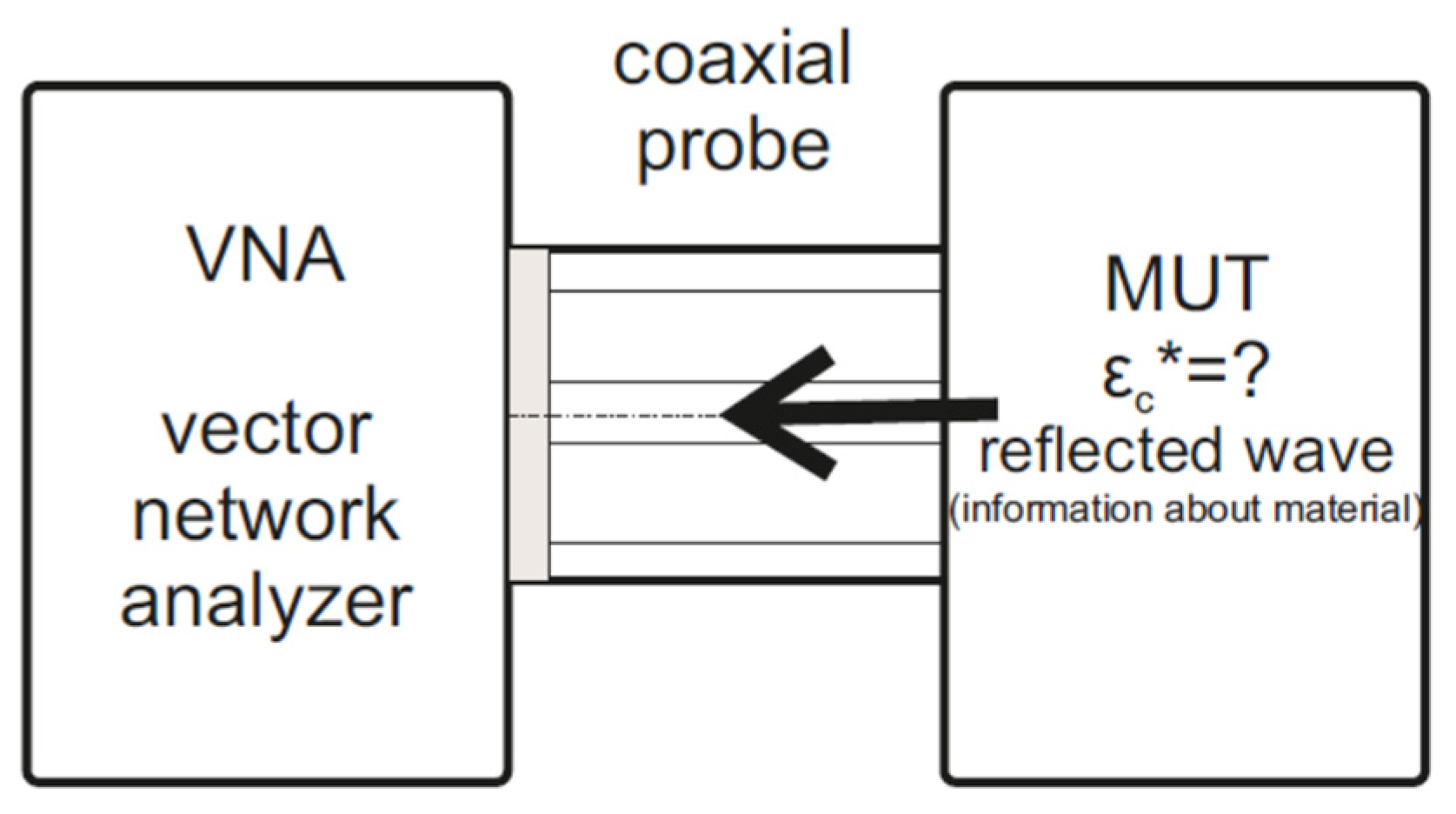

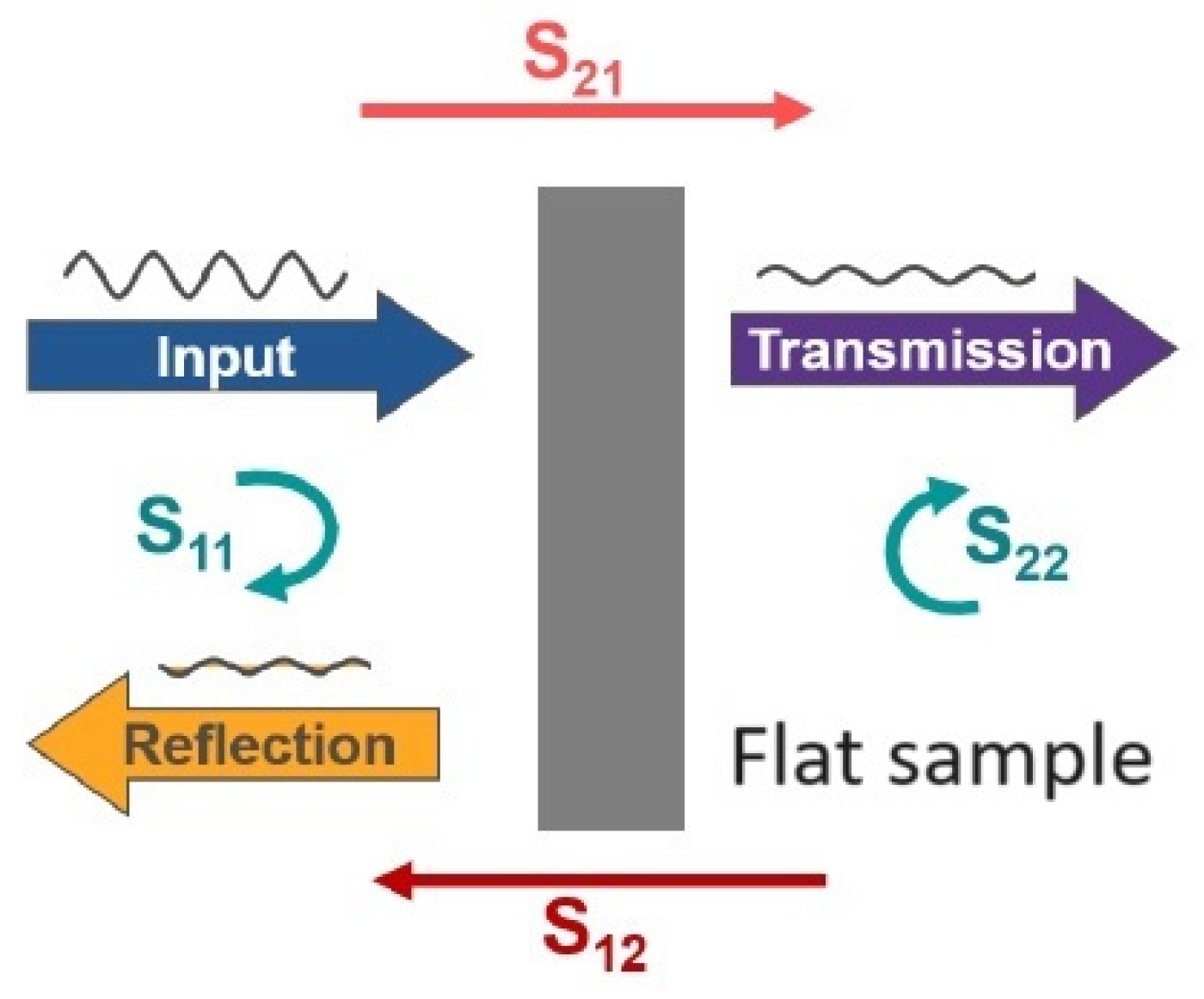


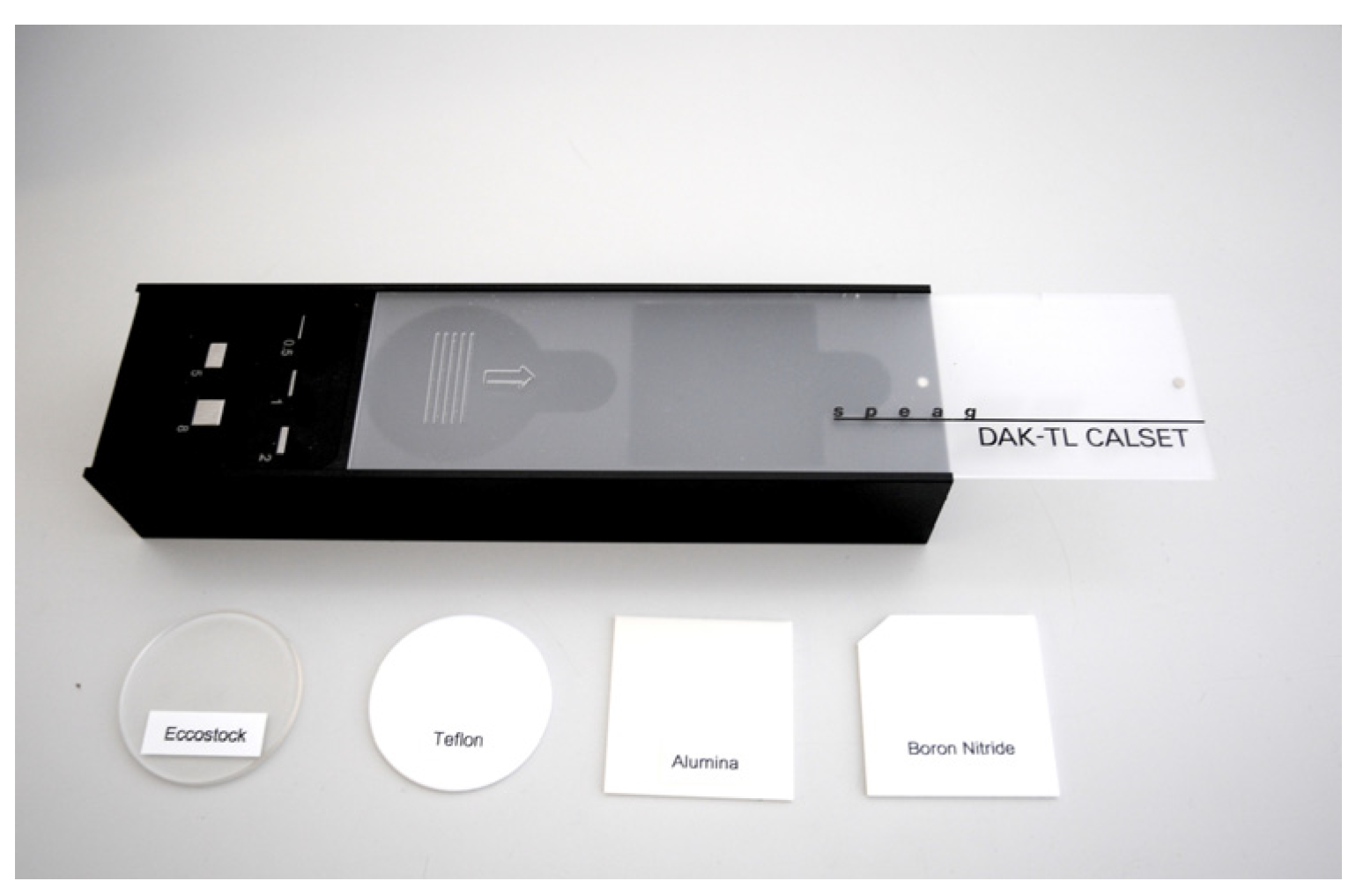
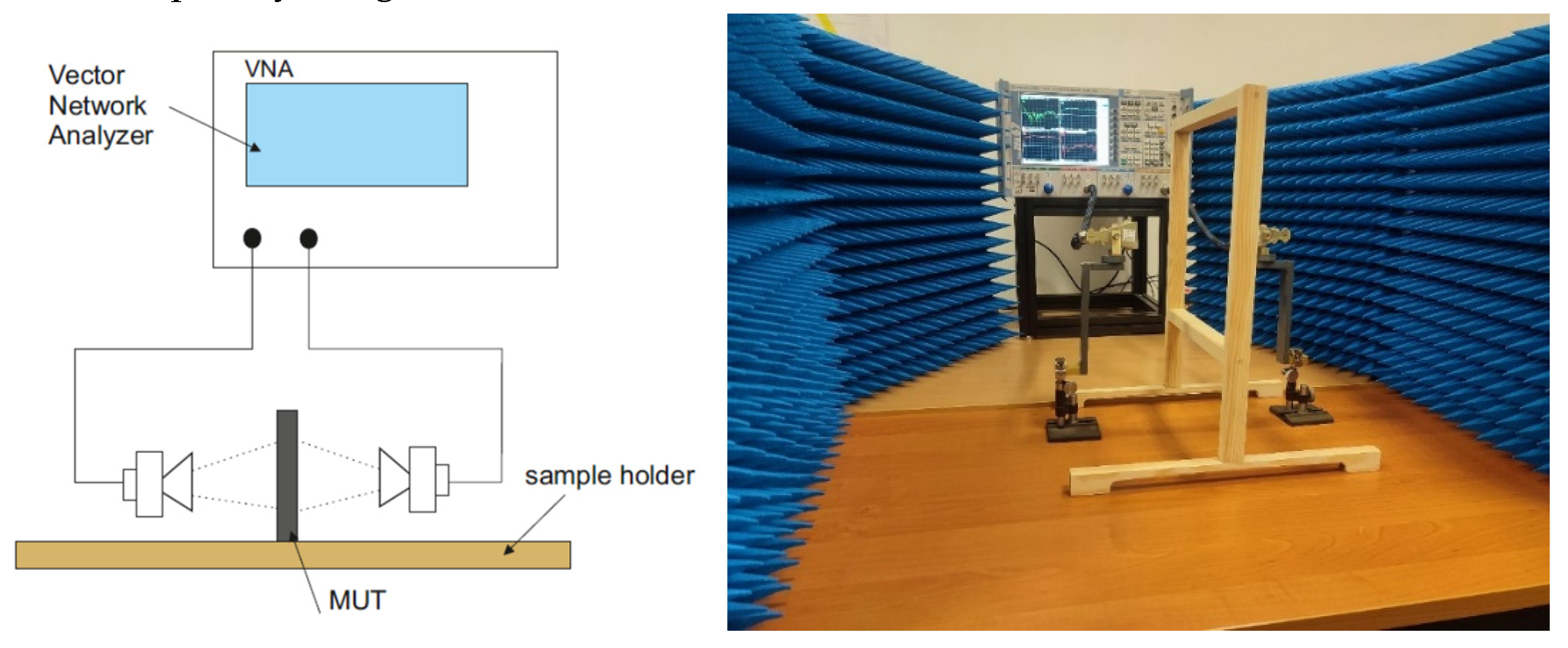
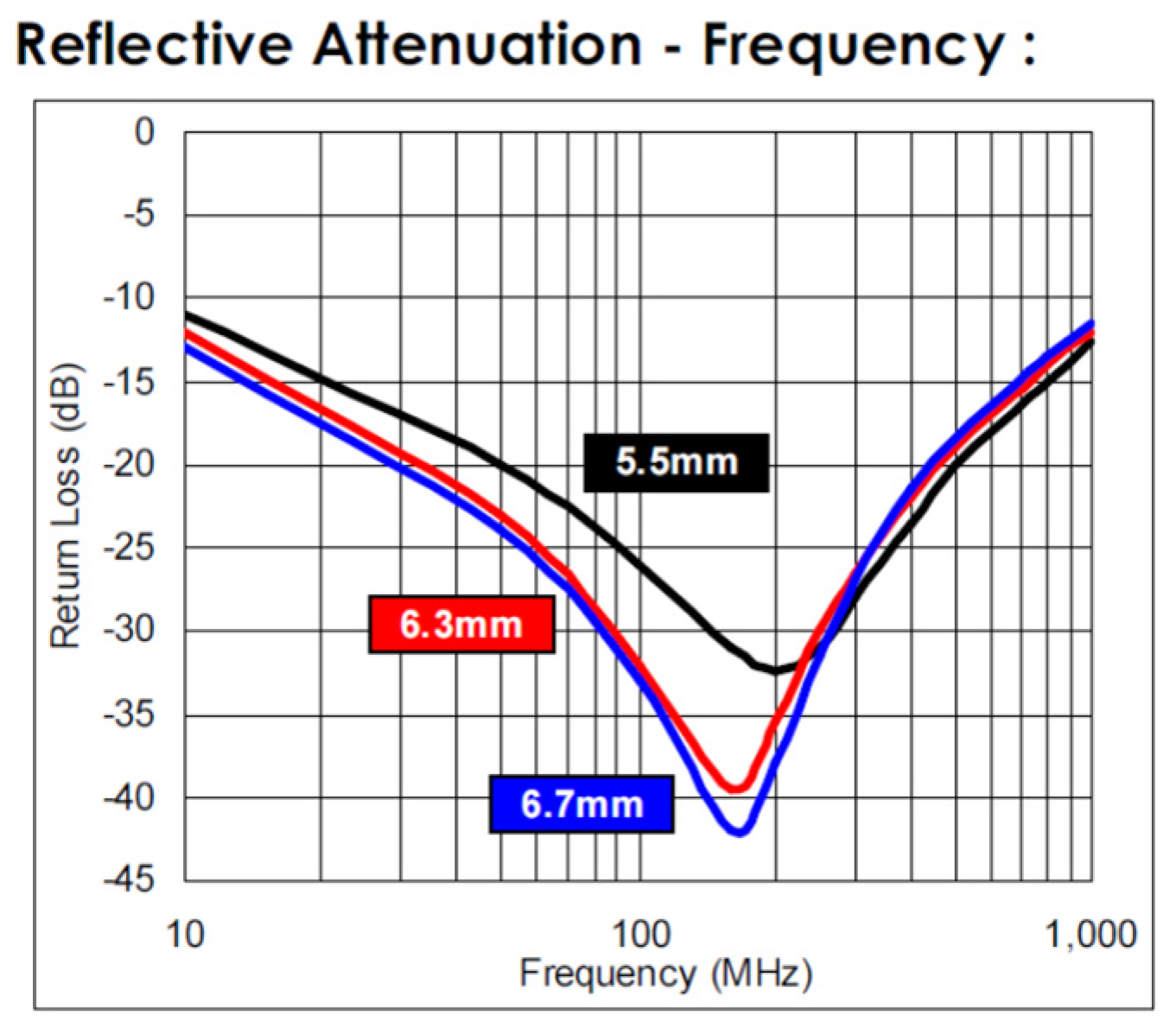
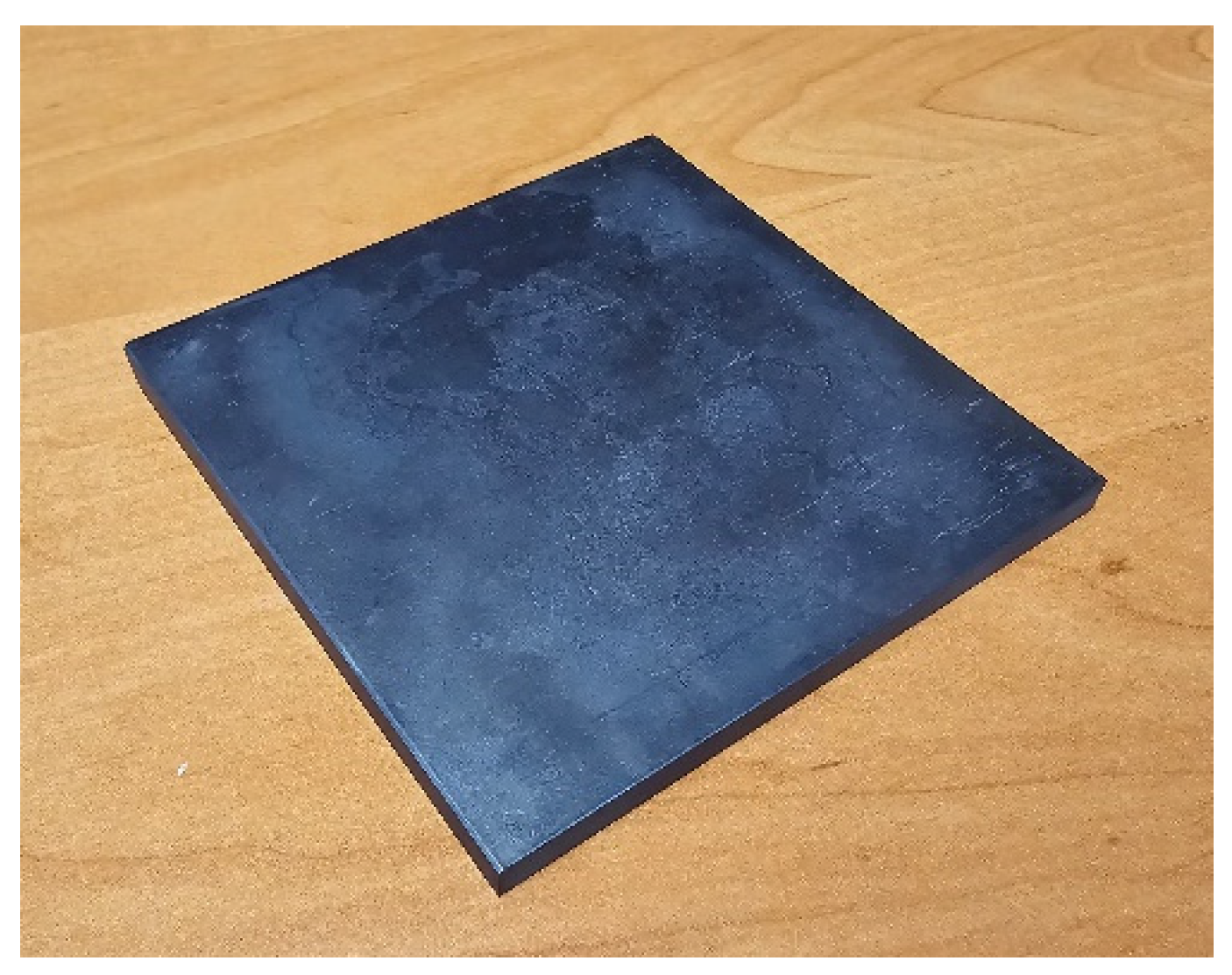

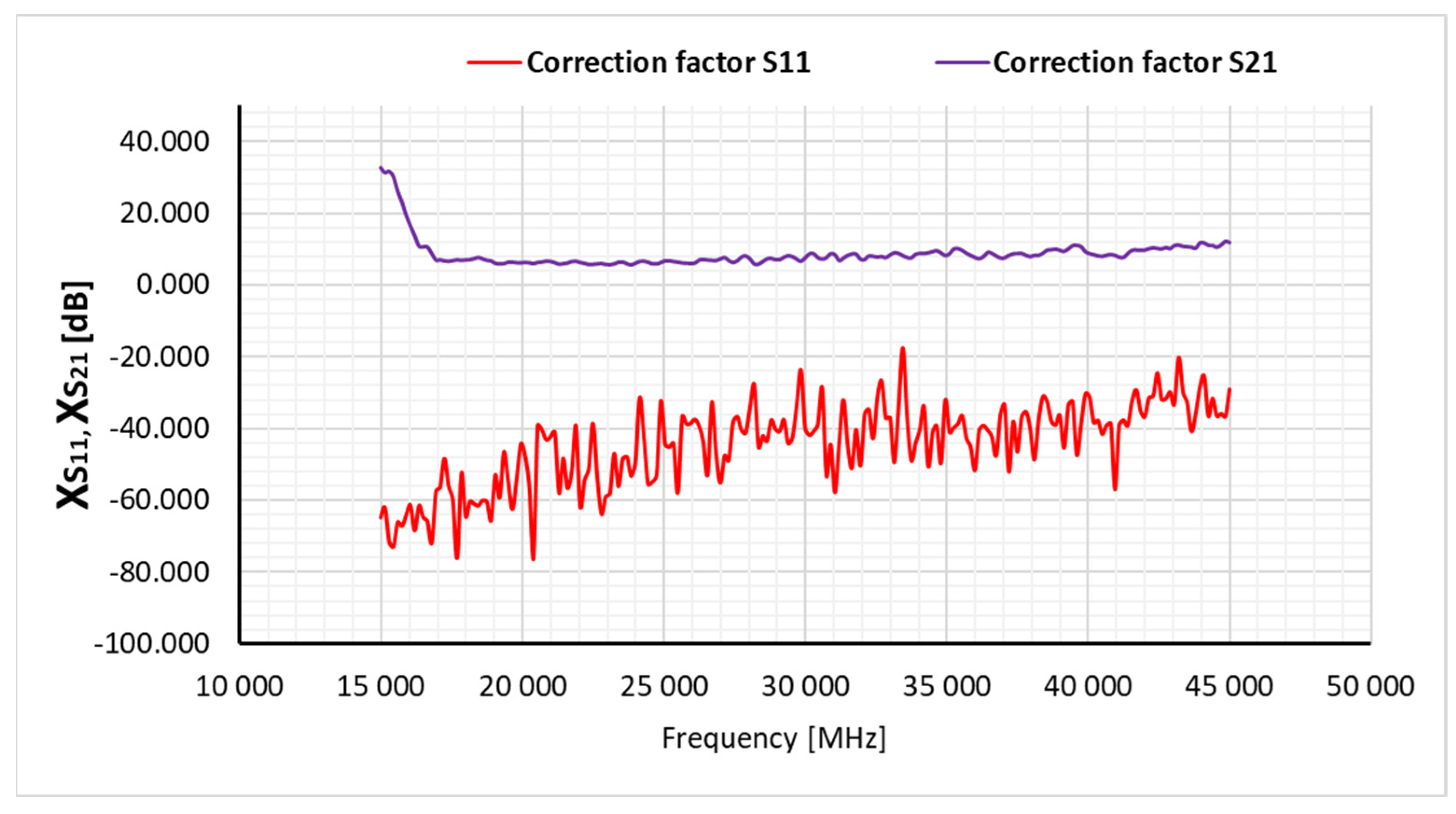
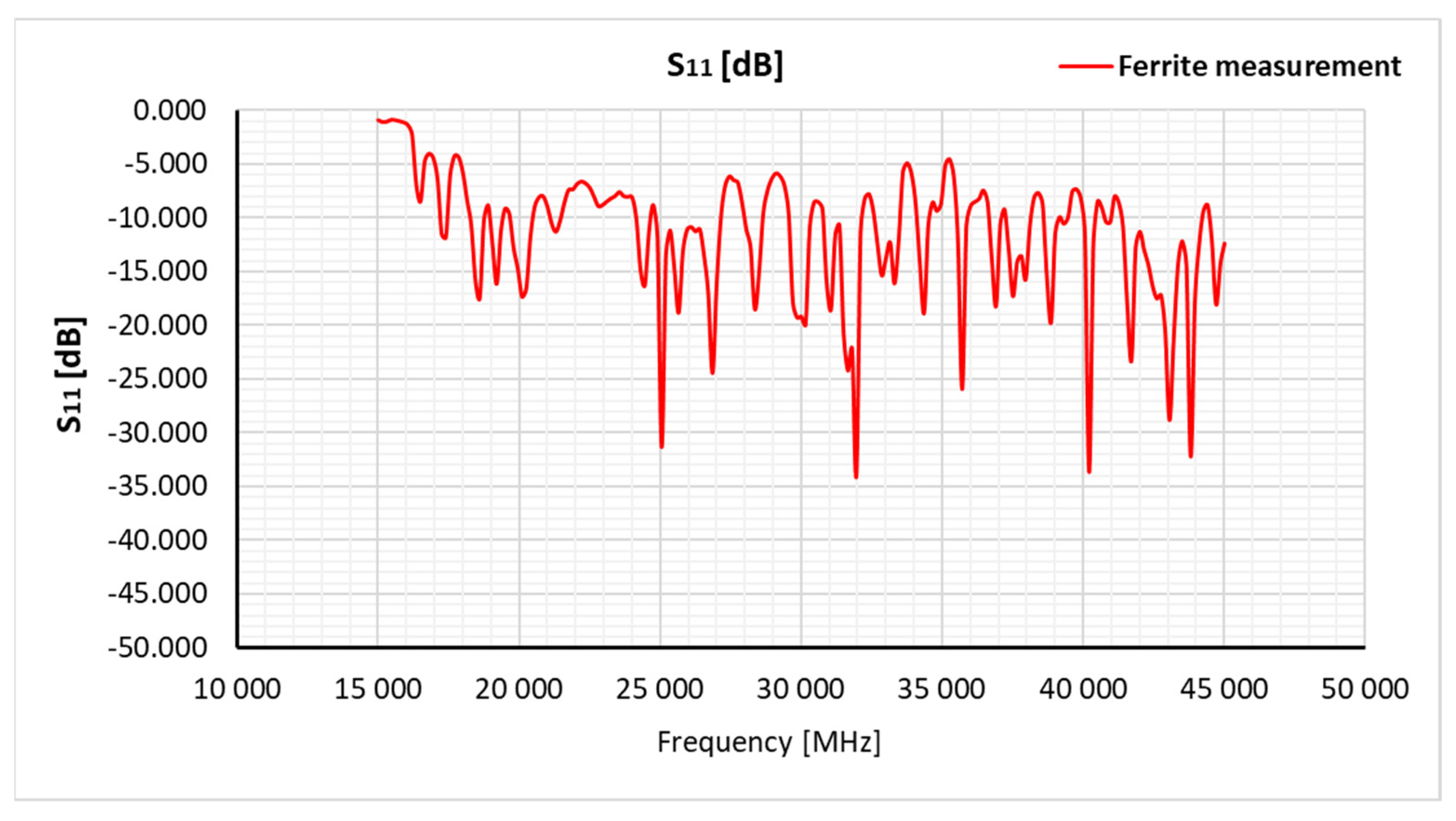
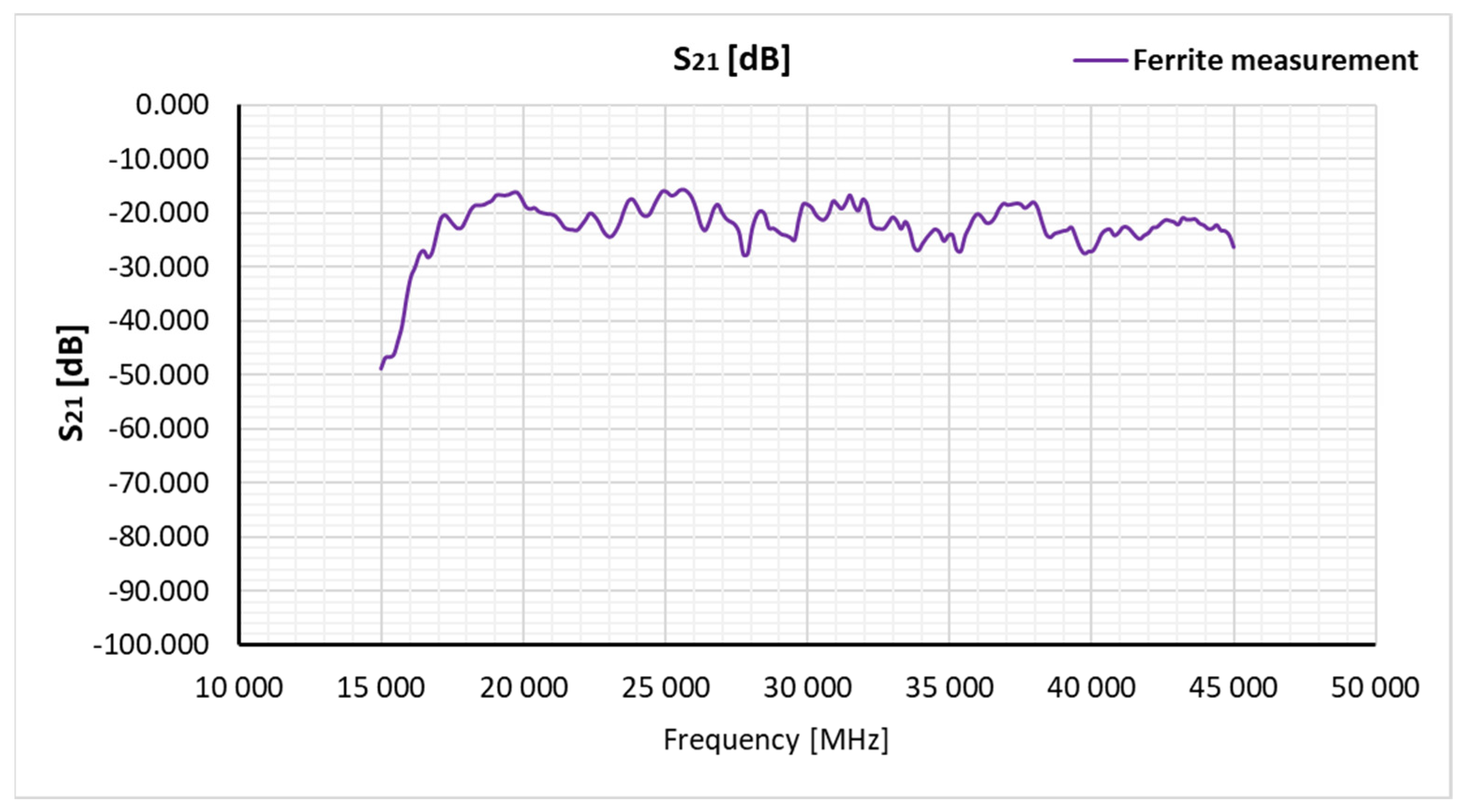
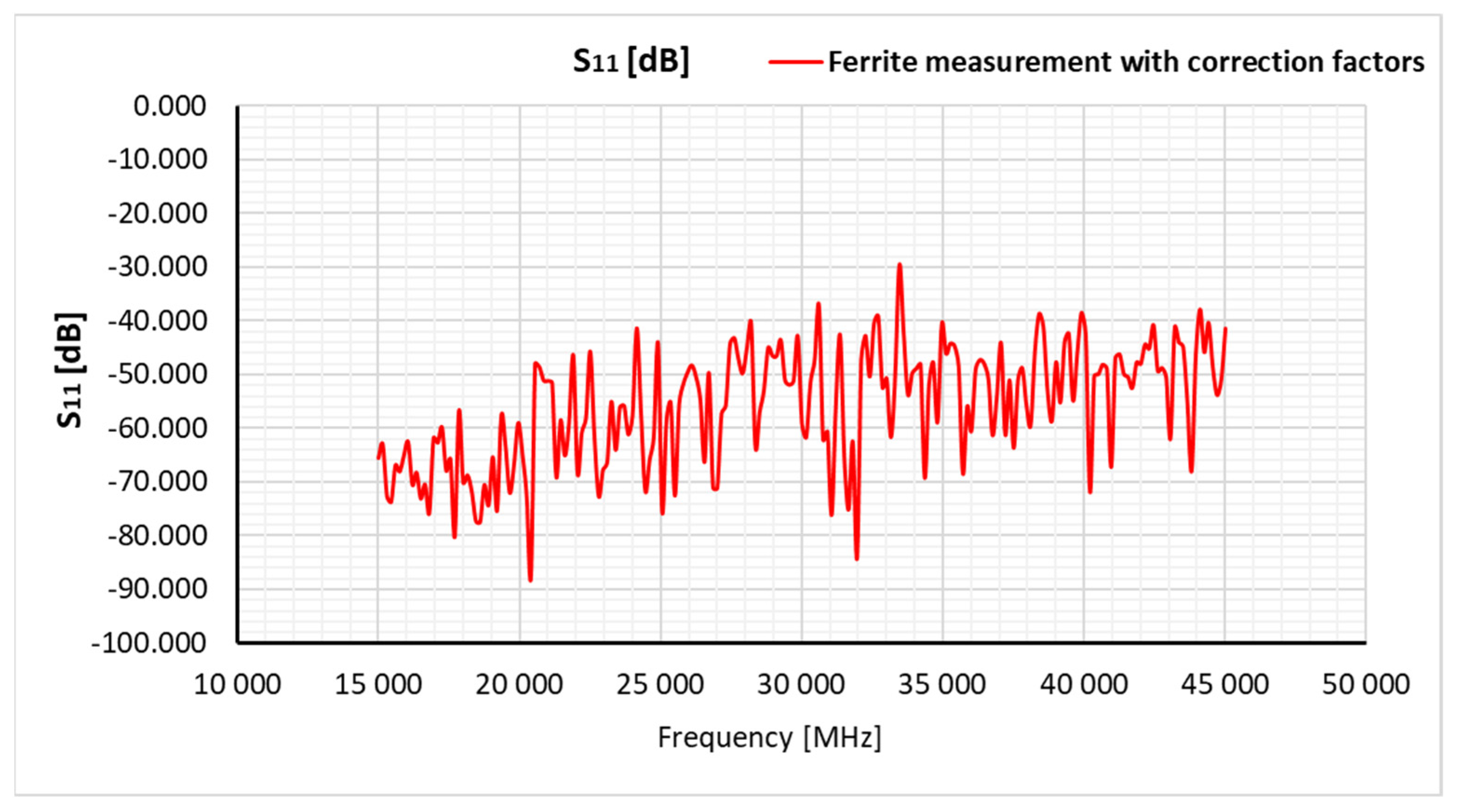
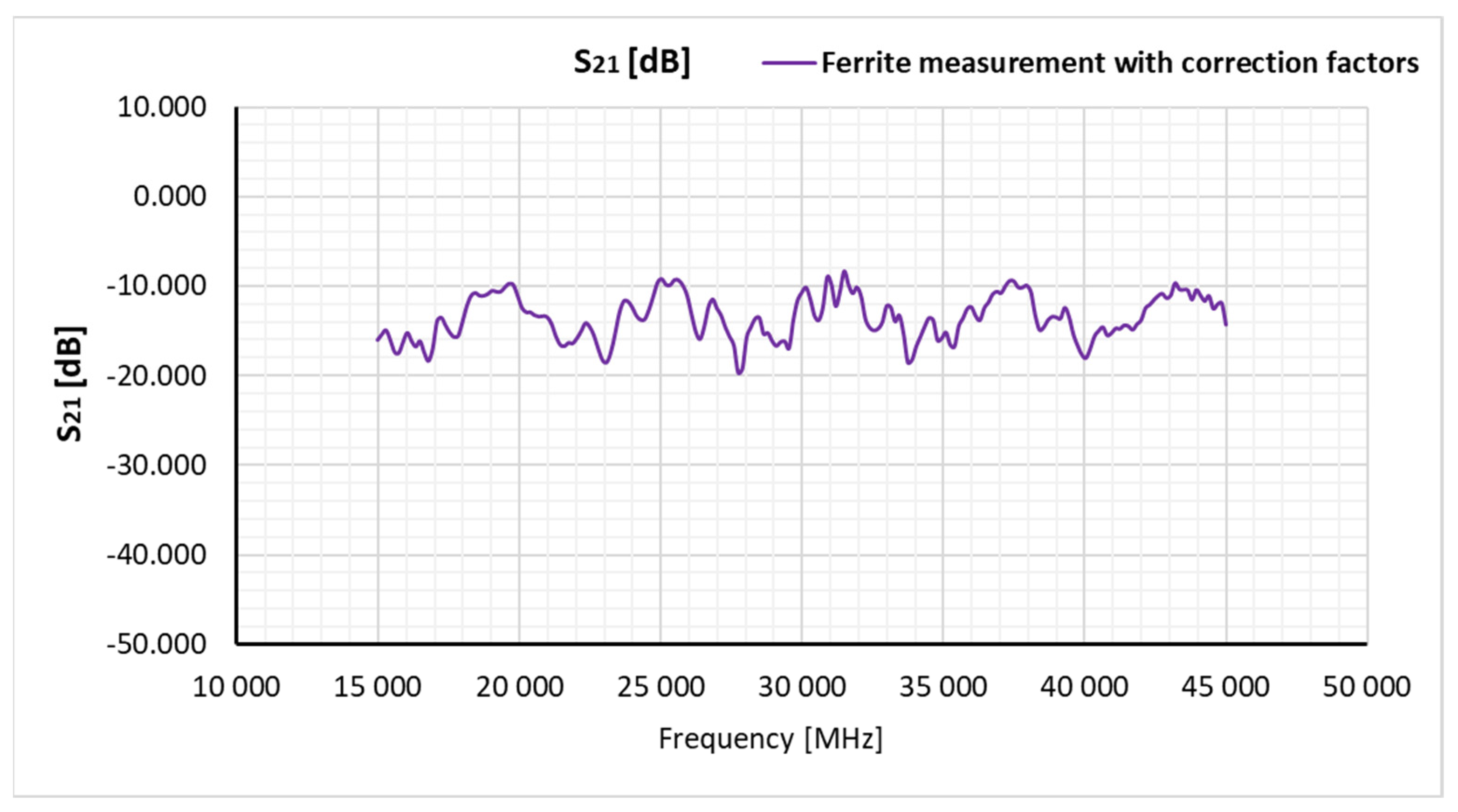
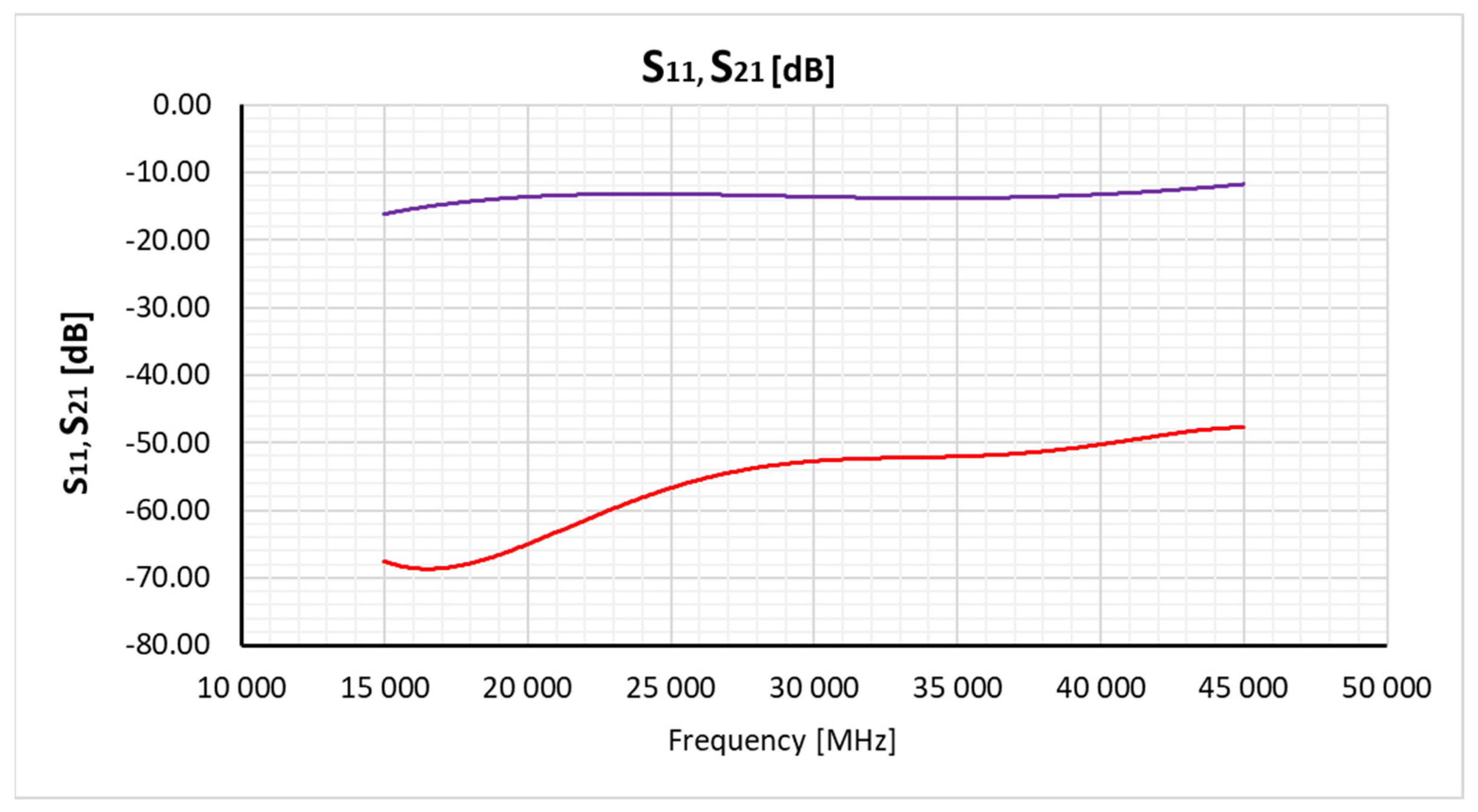
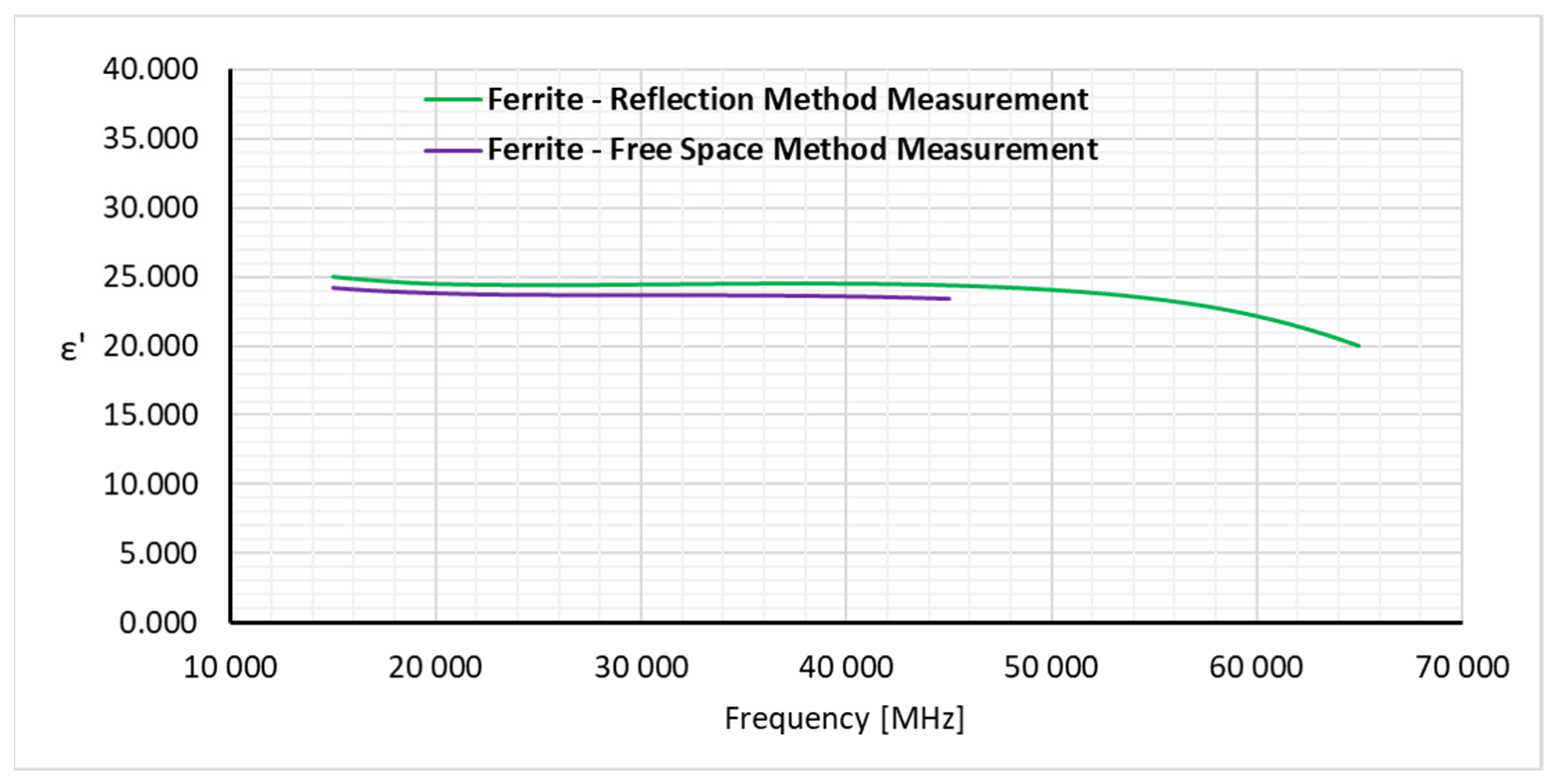
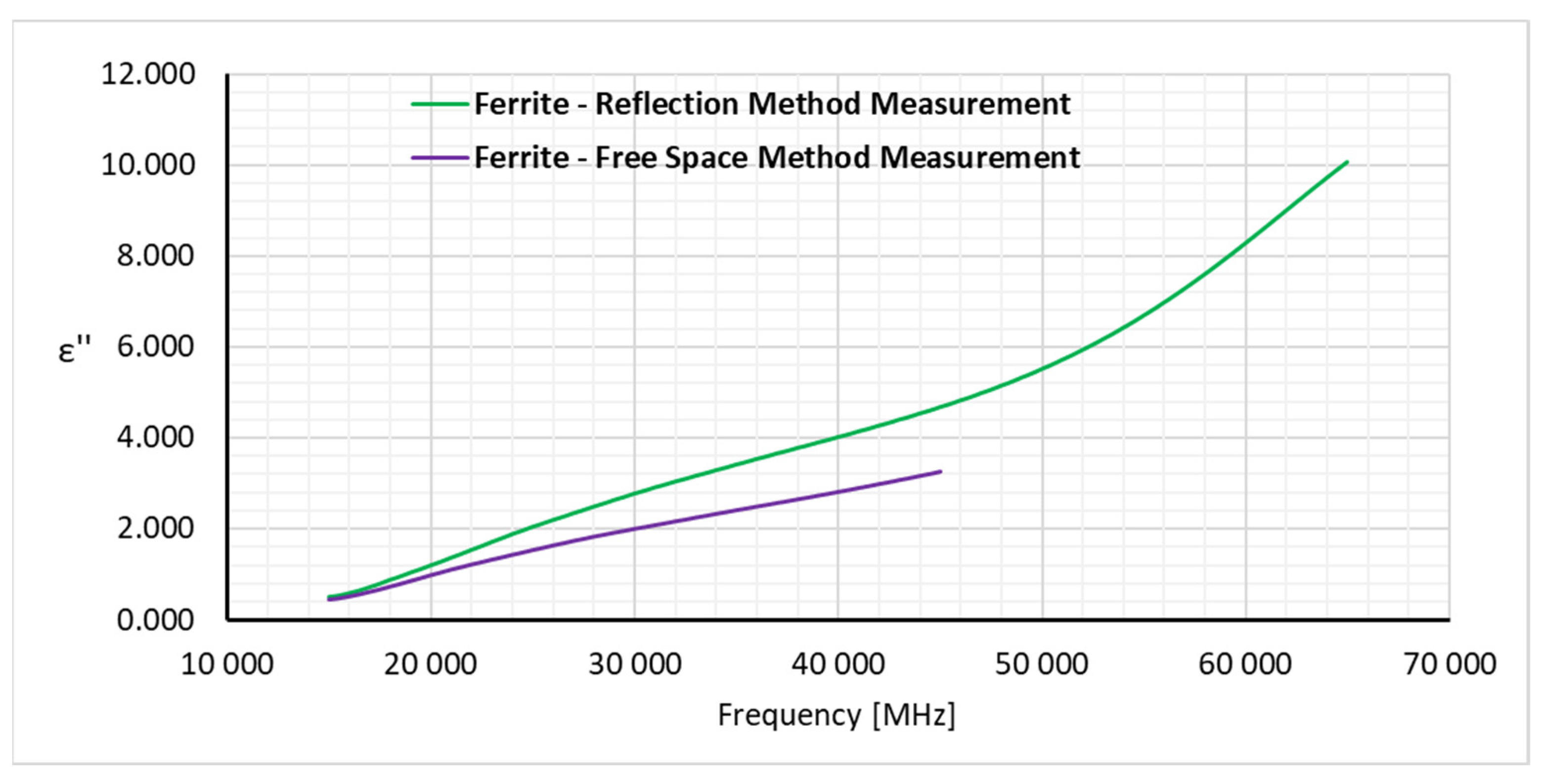
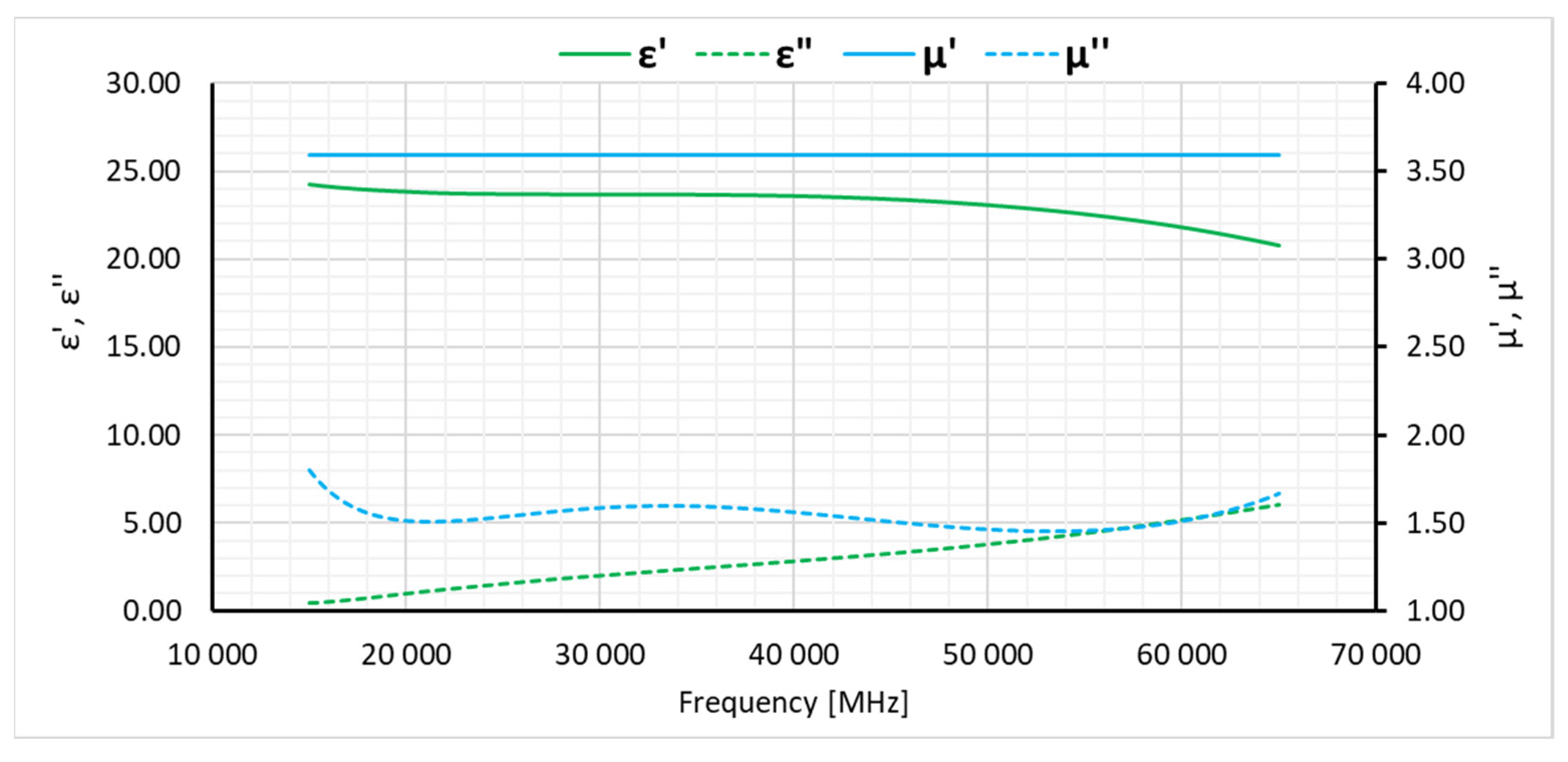
| Parameter | Range |
|---|---|
| Frequency range | 18 GHz - 45 GHz |
| Antenna factor | 40,3 do 41,1 |
| Gain | od 15 do 21,2 dBi |
| Maximum continuous power | 10 W |
| Maximum radiated field | 100 V/m |
| Impedance | 50 Ω |
| VSWR | 1,2:1 (maks. 1,5:1) |
| Connector | female 2,9 mm |
| Mounting base | ¼ - 20 thread, female |
Disclaimer/Publisher’s Note: The statements, opinions and data contained in all publications are solely those of the individual author(s) and contributor(s) and not of MDPI and/or the editor(s). MDPI and/or the editor(s) disclaim responsibility for any injury to people or property resulting from any ideas, methods, instructions or products referred to in the content. |
© 2023 by the authors. Licensee MDPI, Basel, Switzerland. This article is an open access article distributed under the terms and conditions of the Creative Commons Attribution (CC BY) license (http://creativecommons.org/licenses/by/4.0/).





